Abstract
To assess the aversive effects of withdrawing monetary reinforcement, human subjects were exposed to a free-operant avoidance procedure in which periods of no reinforcement occurred if the subject failed to respond, and each response postponed withdrawal of reinforcement. Avoidance behavior was developed either through specific instructions about the consequence of responding or through preliminary escape-avoidance training. In all cases, rates of response were found to be a positively accelerated function of decreases in the duration by which responding postponed reinforcement withdrawal. The findings with respect to the function relating avoidance behavior to the interval of postponement were viewed as similar to those obtained when shock is used as the aversive event in free-operant avoidance conditioning.
Full text
PDF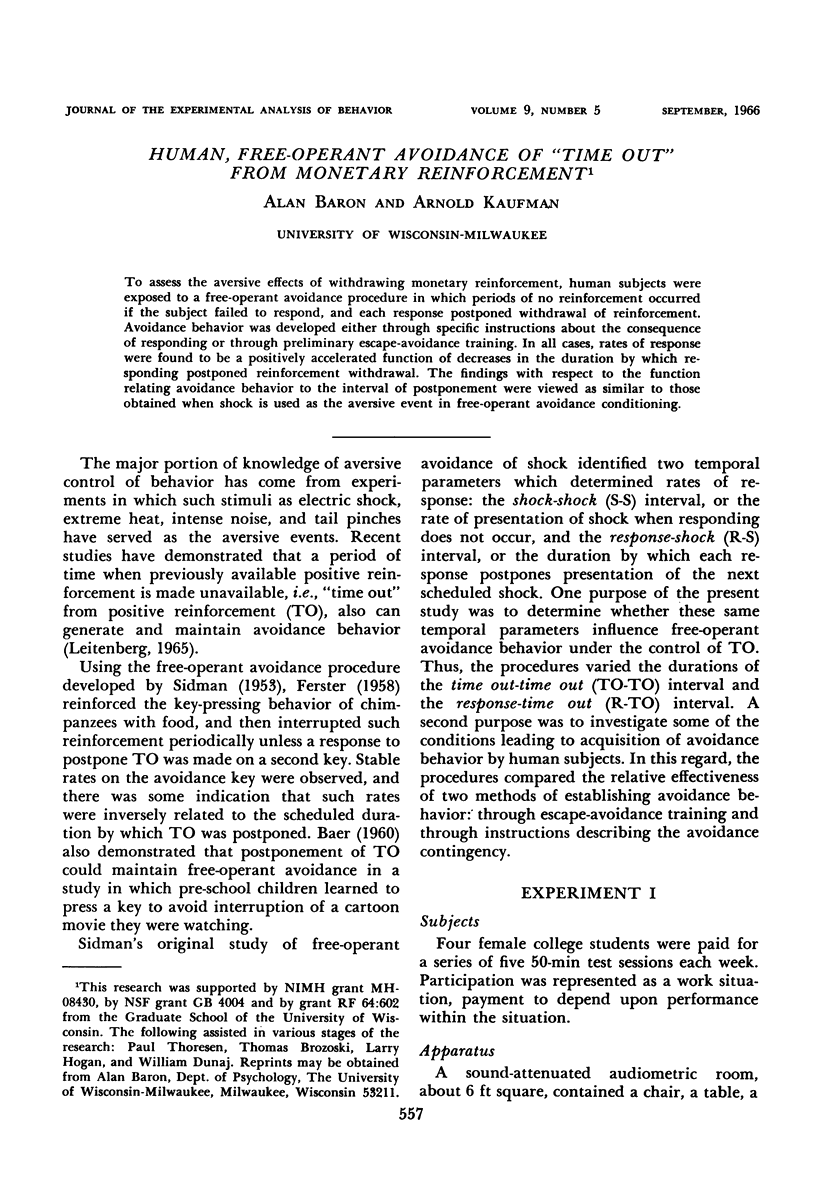
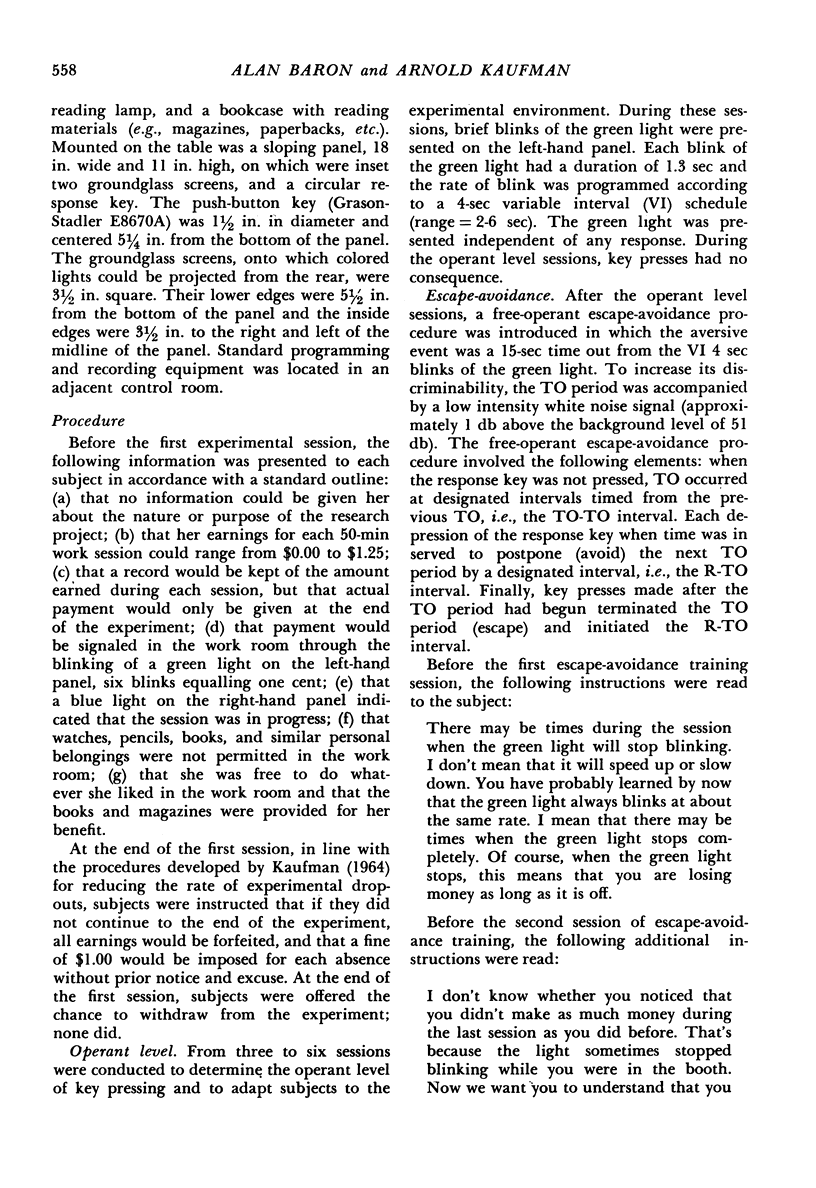
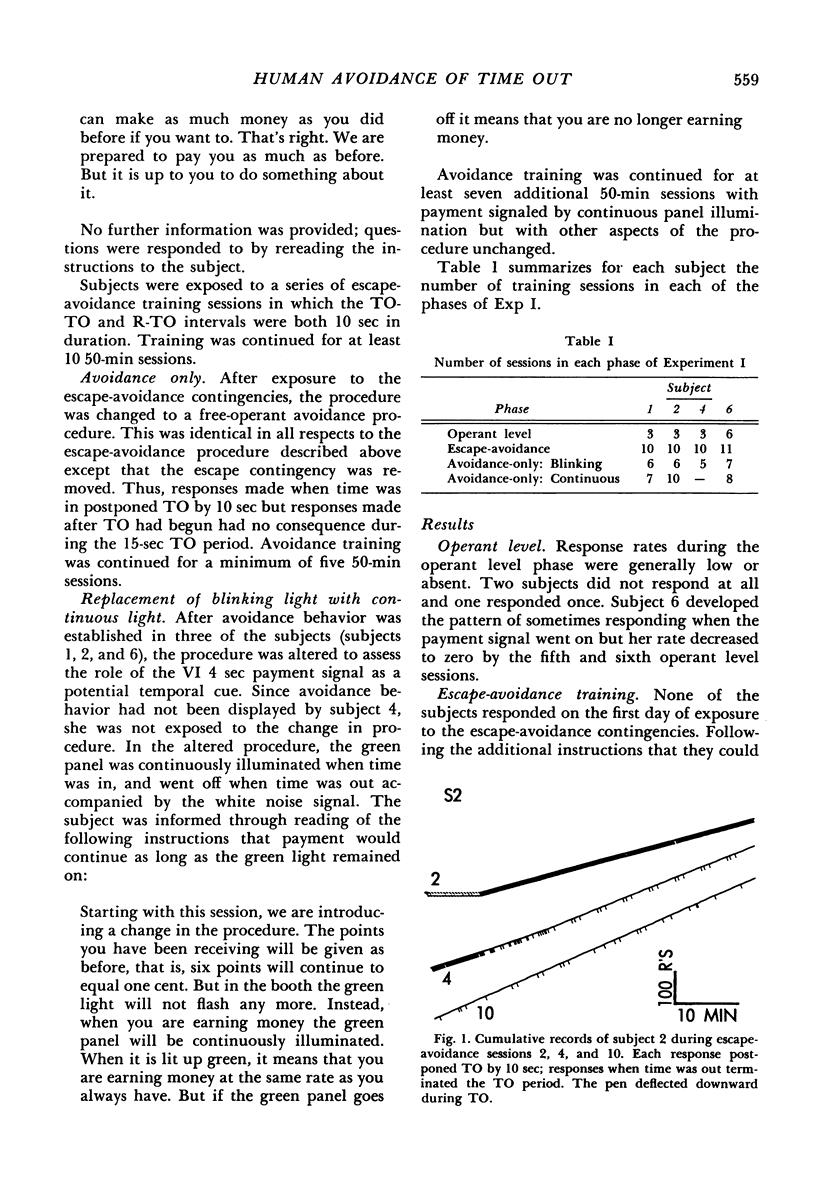
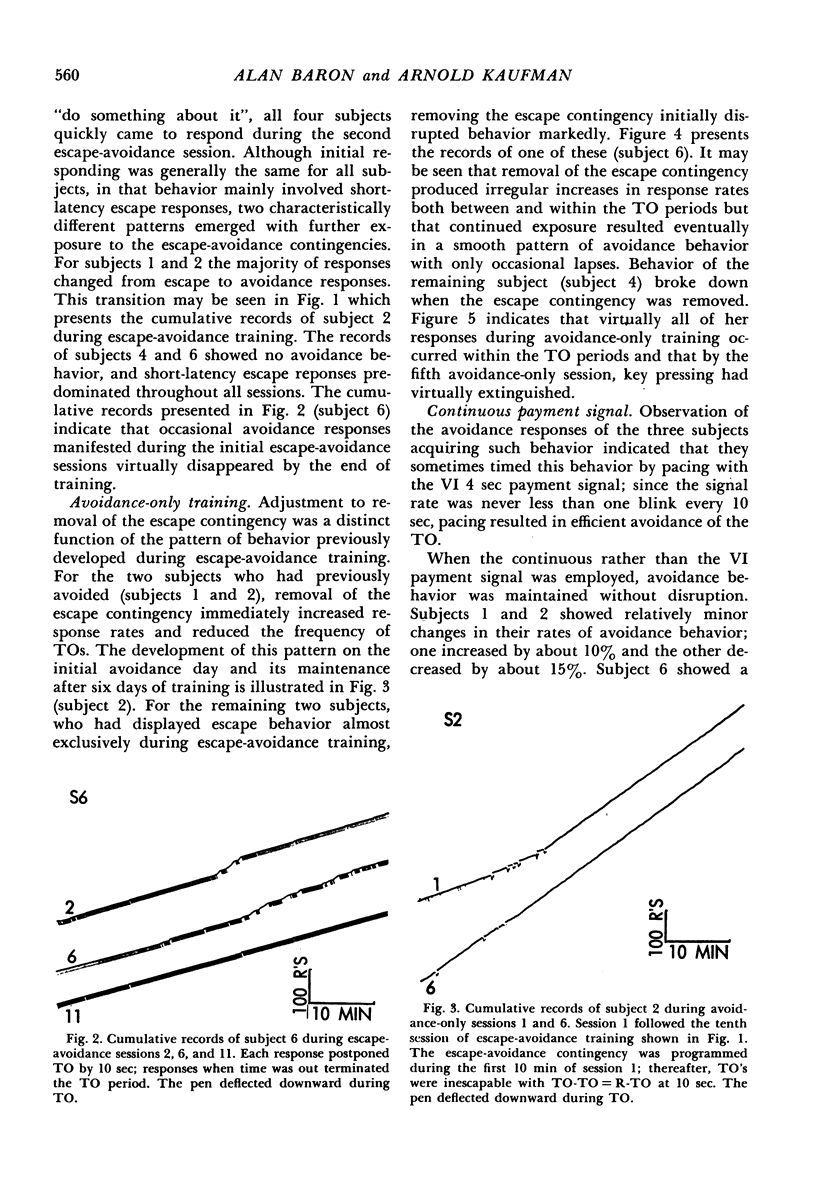
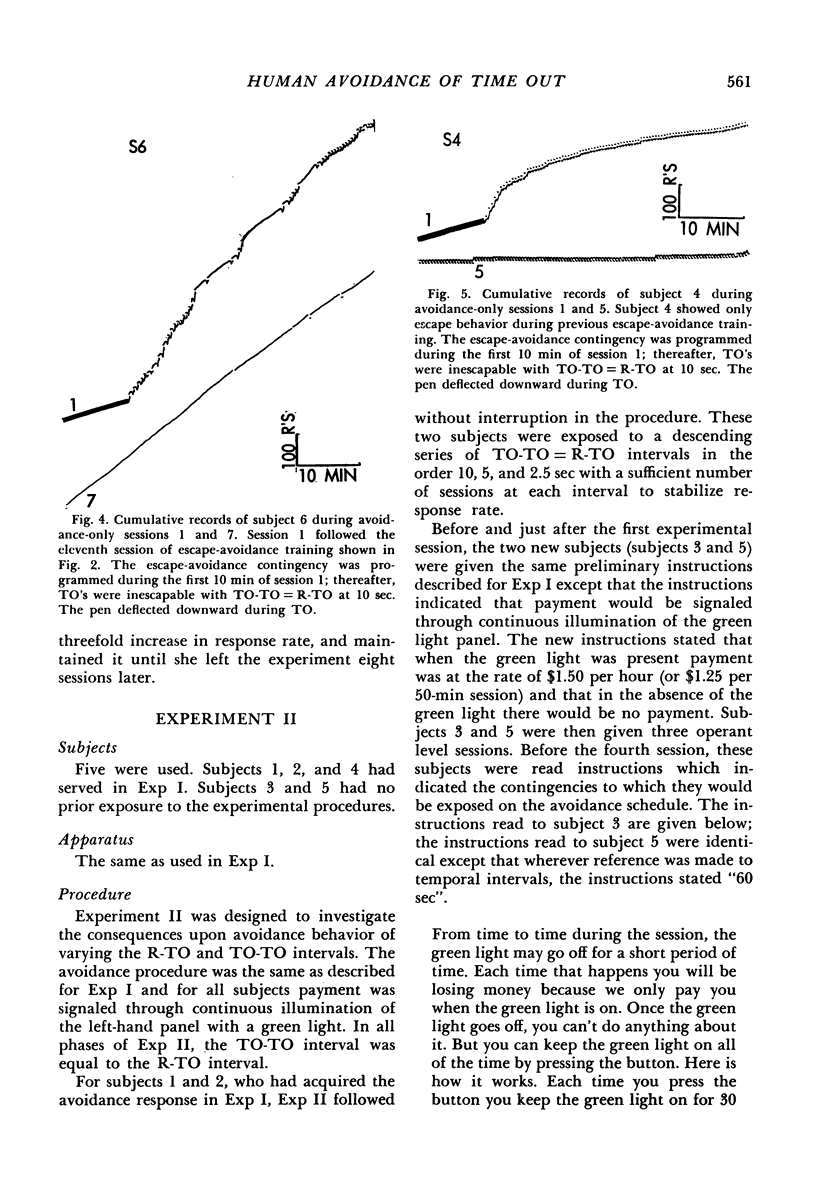
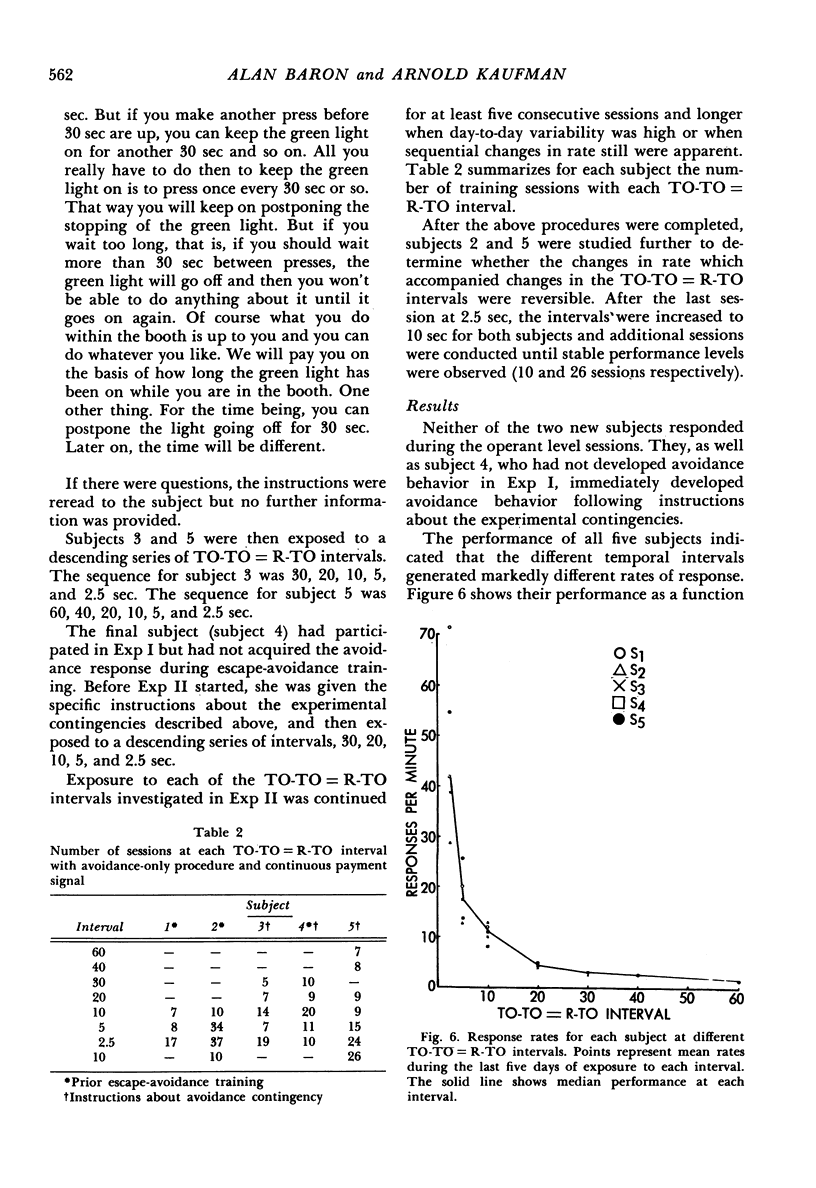
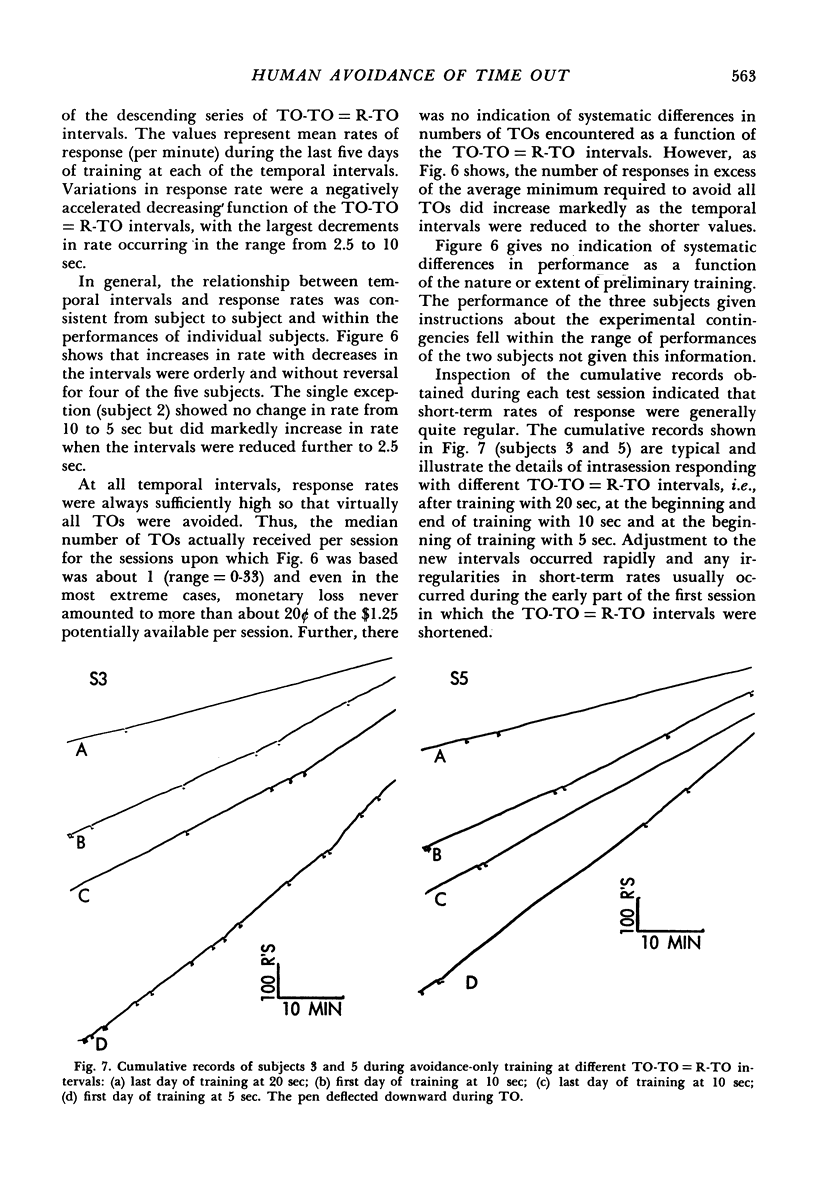
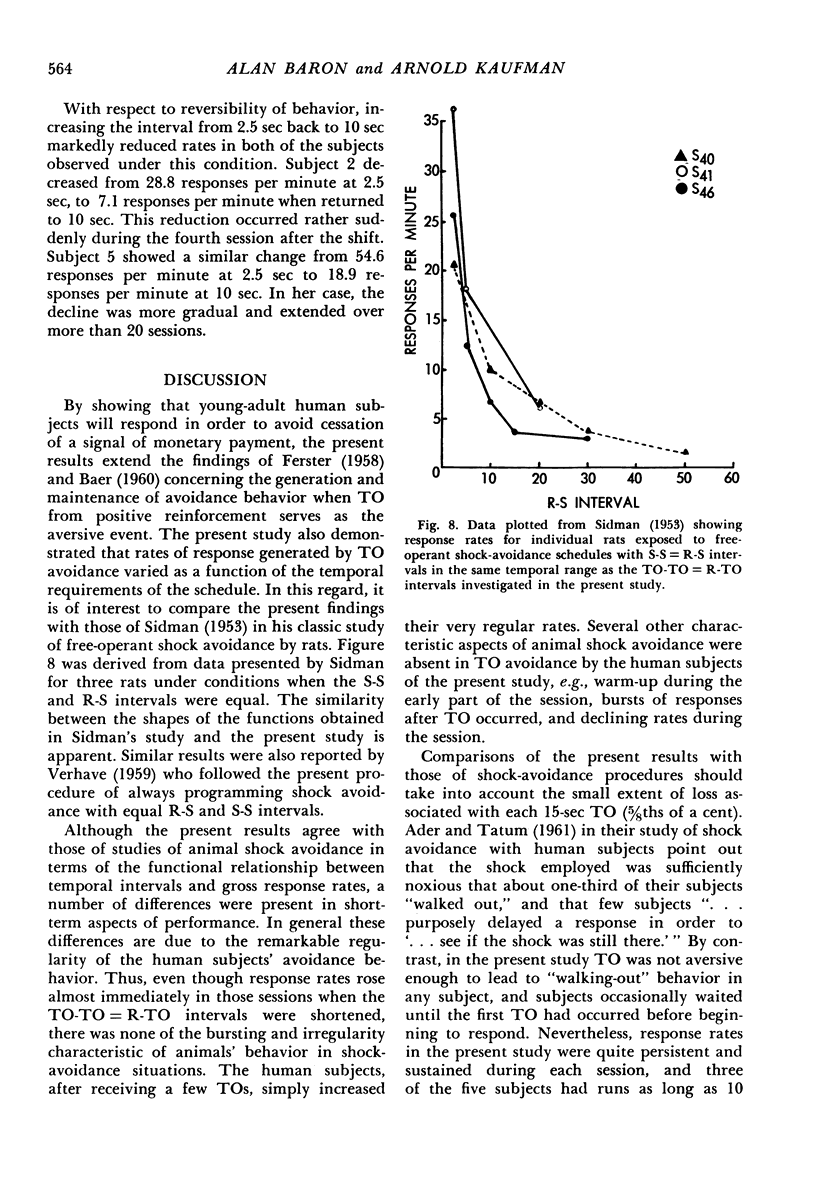
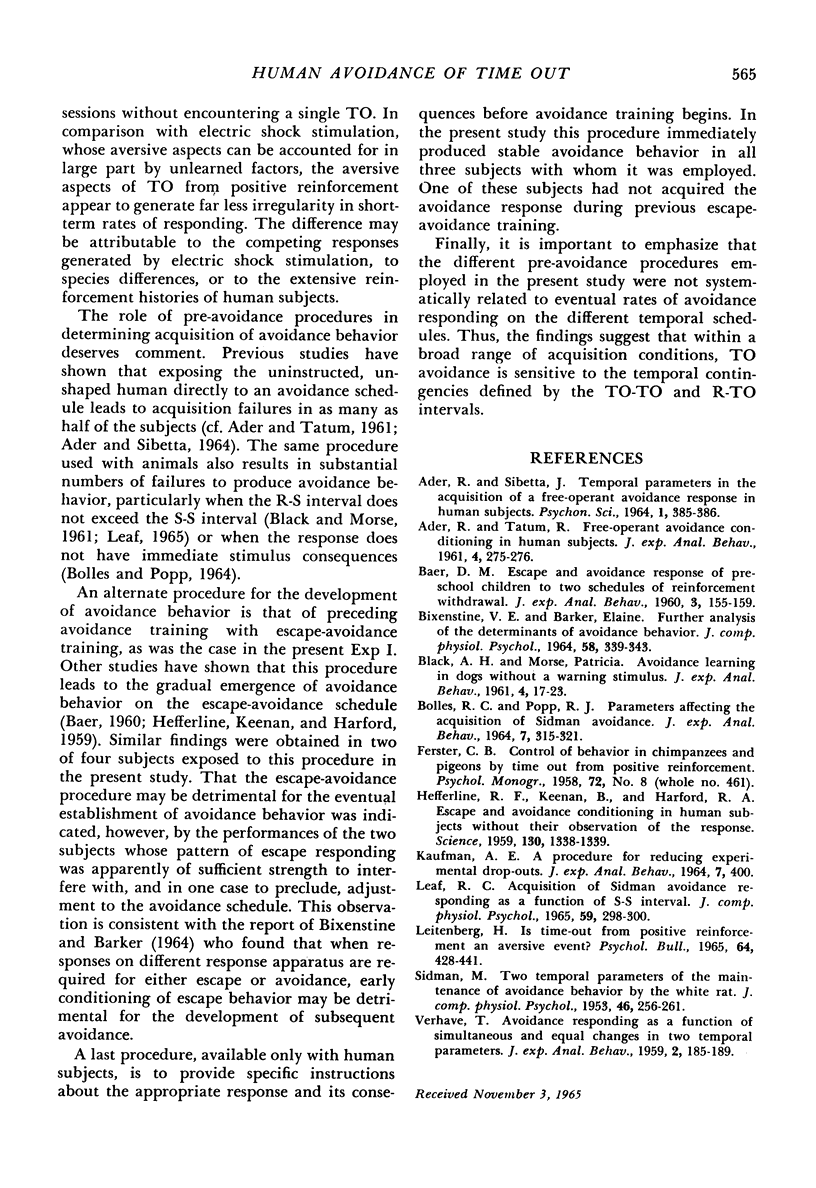
Selected References
These references are in PubMed. This may not be the complete list of references from this article.
- ADER R., TATUM R. Free-operant avoidance conditioning in human subjects. J Exp Anal Behav. 1961 Jul;4:275–276. doi: 10.1901/jeab.1961.4-275. [DOI] [PMC free article] [PubMed] [Google Scholar]
- BAER D. M. Escape and avoidance response of pre-school children to two schedules of reinforcement withdrawal. J Exp Anal Behav. 1960 Apr;3:155–159. doi: 10.1901/jeab.1960.3-155. [DOI] [PMC free article] [PubMed] [Google Scholar]
- BIXENSTINE V. E., BARKER E. FURTHER ANALYSIS OF THE DETERMINANTS OF AVOIDANCE BEHAVIOR. J Comp Physiol Psychol. 1964 Dec;58:339–343. doi: 10.1037/h0042111. [DOI] [PubMed] [Google Scholar]
- BOLLES R. C., POPP R. J., Jr PARAMETERS AFFECTING THE ACQUISITION OF SIDMAN AVOIDANCE. J Exp Anal Behav. 1964 Jul;7:315–321. doi: 10.1901/jeab.1964.7-315. [DOI] [PMC free article] [PubMed] [Google Scholar]
- Black A. H., Morse P. Avoidance learning in dogs without a warning stimulus. J Exp Anal Behav. 1961 Jan;4(1):17–23. doi: 10.1901/jeab.1961.4-17. [DOI] [PMC free article] [PubMed] [Google Scholar]
- HEFFERLINE R. F., KEENAN B., HARFORD R. A. Escape and avoidance conditioning in human subjects without their observation of the response. Science. 1959 Nov 13;130(3385):1338–1339. doi: 10.1126/science.130.3385.1338. [DOI] [PubMed] [Google Scholar]
- KAUFMAN A. E. A PROCEDURE FOR REDUCING EXPERIMENTAL DROP-OUTS. J Exp Anal Behav. 1964 Nov;7:400–400. doi: 10.1901/jeab.1964.7-400. [DOI] [PMC free article] [PubMed] [Google Scholar]
- LEAF R. C. ACQUISITION OF SIDMAN AVOIDANCE RESPONDING AS A FUNCTION OF S-S INTERVAL. J Comp Physiol Psychol. 1965 Apr;59:298–300. doi: 10.1037/h0021844. [DOI] [PubMed] [Google Scholar]
- Leitenberg H. Is time-out from positive reinforcement an aversive event? A review of the experimental evidence. Psychol Bull. 1965 Dec;64(6):428–441. doi: 10.1037/h0022657. [DOI] [PubMed] [Google Scholar]
- SIDMAN M. Two temporal parameters of the maintenance of avoidance behavior by the white rat. J Comp Physiol Psychol. 1953 Aug;46(4):253–261. doi: 10.1037/h0060730. [DOI] [PubMed] [Google Scholar]
- VERHAVE T. Avoidance responding as a function of simultaneous and equal changes in two temporal parameters. J Exp Anal Behav. 1959 Jul;2:185–190. doi: 10.1901/jeab.1959.2-185. [DOI] [PMC free article] [PubMed] [Google Scholar]


